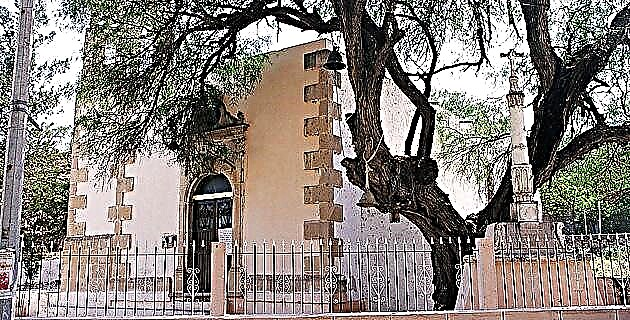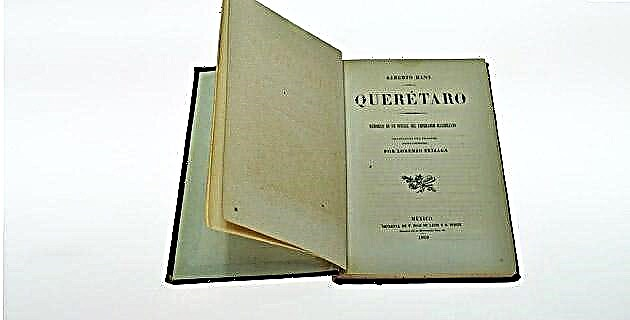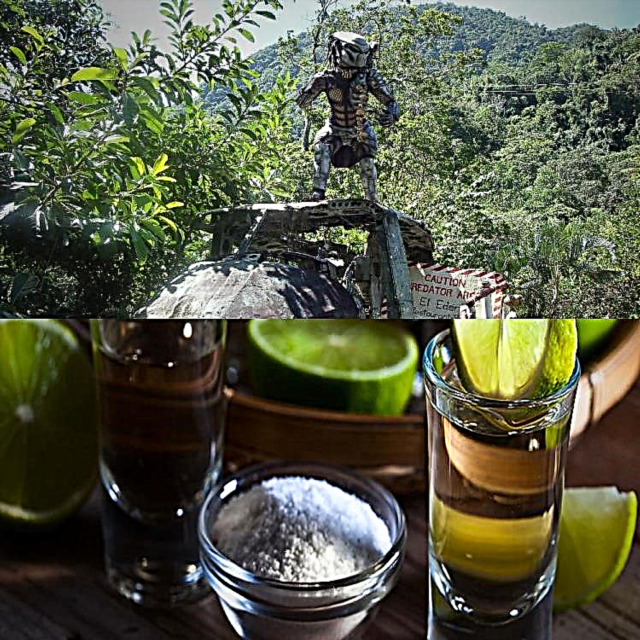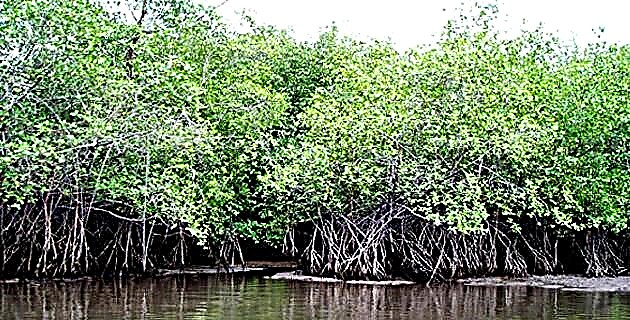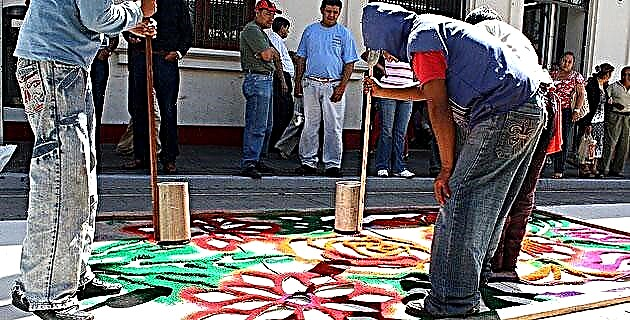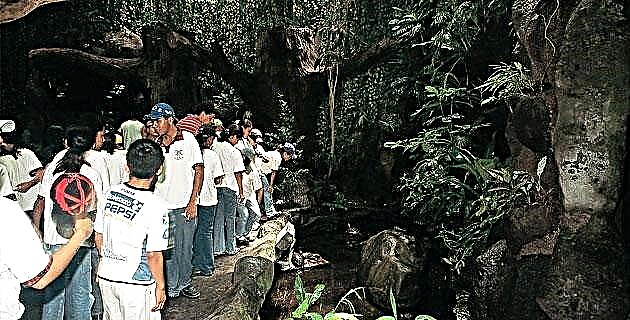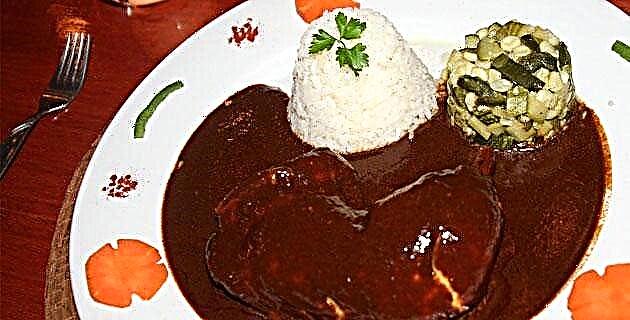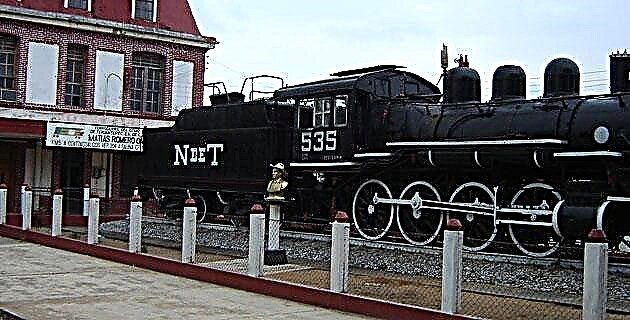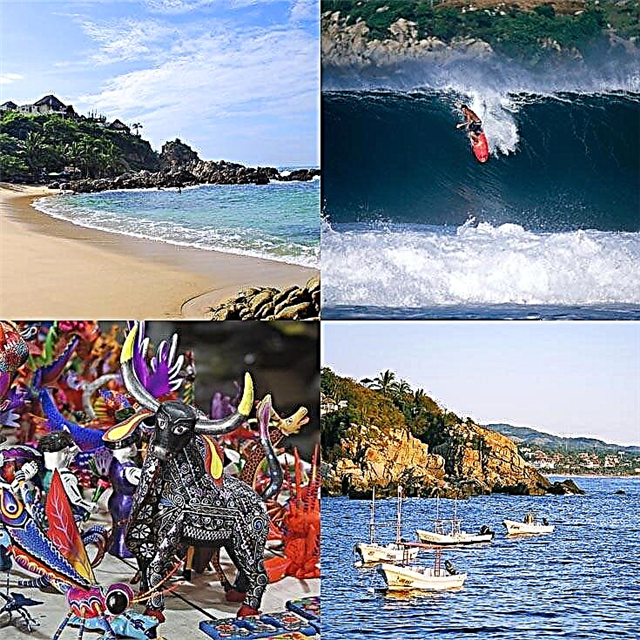Puerto Escondido is a highly visible paradise for fans of the beach and the sea. With this complete guide to the cozy Oaxacan coastal city, your trip will be unforgettable.
1. Where is Puerto Escondido located?
Puerto Escondido is the most populated city on the Oaxaca coast, in the municipality of San Pedro Mixtepec.
This municipality is located in the central part of the state coast, bordering the Oaxacan municipal entities of Santos Reyes Nopala, San Gabriel Mixtepec, San Sebastián Coatlán, Santa María Colotepec and Villa de Tututepec de Melchor Ocampo.
The city of Oaxaca is 102 km north of Puerto Escondido, while the journey from Mexico City is 762 km south towards Acapulco and then southeast towards the Oaxacan coast.
2. How did Puerto Escondido come about?
There is no evidence that the Puerto Escondido territory has been occupied by pre-Hispanic natives and neither did the Spanish settle there during the colony.
The oldest references to the site refer to a legend attributed to the pirate Andrew Drake, brother of Francis Drake. This English corsair from the second half of the 16th century would have kidnapped a young Mixtec native, who later managed to escape, hiding in the jungle, which is why the bay was called La Escondida.
Starting in the 1930s, Puerto Escondido began to develop as a commercial terminal and tourist flows began in the 1960s, with the construction of Highway 200 to link Acapulco with Oaxaca.
3. What is the local climate like?
Puerto Escondido is a coastal city with a tropical climate, with an average annual temperature of 27.3 ° C.
The thermometer registers few seasonal variations in the town, since in the less hot months, which are December and January, it marks around 26 ° C, while in the warmest period, from April to September, the average temperature is 28 ° C.
The rainy season is from May to October, when more than 95% of the 946 mm of water that falls per year falls. Between November and April there is practically no rain in Puerto Escondido.
4. What are the most notable attractions in Puerto Escondido?

Puerto Escondido is a true paradise for beach lovers. There you will find sandy areas for all tastes, with calm or intense waters, white or gray sands, and a lonely or crowded atmosphere.
A minimum list of the Beaches of Puerto Escondido and its surroundings should include Playa Principal, Playa Marinero, Puerto Angelito, Playa Zicatela, Playa Carrizalillo, Mazunte, Zipolite, Playa Bacocho and Rocablanca.
In the urban area of Puerto Escondido, you must know El Adoquín, while among the towns near the municipal seat, Rio Grande, La Barra de Colotepec, San Gabriel Mixtepec, San Pedro Juchatengo and Santa Catarina Juquila stand out for their attractions.
Likewise, the Laguna de Manialtepec and the Lagunas de Chacahua National Park are natural spaces of great beauty.
5. What does Playa Principal have?
This beach is located on the eastern side of the main bay of Puerto Escondido and has calm waves. It is approximately half a kilometer long and is shaded by coconut trees, its sand is gray and the waters are warm and have green and turquoise tones.
On this beach the fishermen of Puerto Escondido stop with their fresh load of fish and shellfish. At Playa Principal you can board the boats to observe turtles, dolphins and perhaps whales, and get to know the surroundings.
Also from Playa Principal boats go out to sea with those interested in practicing sport fishing.
6. What can I do in Playa Marinero?
This small sandy area of approximately 200 meters in length is located to the east of the Main Beach and is highly recommended for enthusiasts of surfing and bodysurfing, particularly beginners in these entertaining sea sports.
If you want to enjoy the most attractive sunset in Puerto Escondido, you must go to this beach with grayish sand and waters with a color between green and turquoise blue.
Another thing you can do in Playa Marinero is rent a horse. It is equipped with a hotel, restaurant and other beach services.
7. What is Puerto Angelito like?

This beach located about 10 minutes west of El Adoquín, is ideal for swimming and for the enjoyment of the whole family, especially children and the elderly, due to the tranquility of its waters and its shallow depth.
Puerto Angelito has warm and clear waters and its sand is fine-grained and white. The transparency of the waters of green and blue tones, makes them appropriate for snorkeling with your own equipment or with one rented on the spot. The shore is shaded by coconut trees and has restaurant service, palapas and hammocks.
8. What are the attractions of Playa Zicatela?
Zicatela is a beach with intense waves, the best, not only in Puerto Escondido but in all of Mexico, for surfing, being classified among the 3 best in the world for the height of the waves, which can reach 6 meters.
It is common to see the most skilled surfers fighting to stay on the waves of this beach, which is usually the scene of world surfing competitions, bringing together the most experienced athletes on the planet.
Zicatela's wide 3 km long sandy area is also great for sunbathing. The name "Zicatela" means "Place of large thorns" in the indigenous language.
9. What is El Cobble?
The old area of Puerto Escondido, the busiest and most traditional in the city, is called El Adoquín or El Adoquinado and is very close to the main bay.
It was the first paved street in the town, and is now its main reference artery, where there are handicraft outlets, restaurants and places to eat a snack, live music, pharmacies and other services.
Vehicular traffic closes at night, making El Adoquín a bustling place to walk safely.
10. What is the interest of the Laguna de Manialtepec?

This coastal lagoon is one of the rare world ecosystems in which three types of waters come together: the sweet ones contributed by the river, the salty ones contributed by the sea and the hot springs coming from a spring.
It is 15 km long and its mangroves can reach a height of 15 meters. "Manialtepec" means "the place where the water that rises from the hill springs from" in the Nahua language.
The lagoon offers at night the beautiful spectacle of its bioluminescence generated by a species of algae that lives in its waters.
Biodiversity enthusiasts travel the lagoon in boats to observe reptiles and birds, particularly herons, parrots and ducks.
11. What can I do in Lagunas de Chacahua National Park?
This magnificent protected area of 133 square kilometers located 74 km west of Puerto Escondido, is made up of several contiguous bodies of water, with extensions of green lake vegetation, mainly mangroves.
The main lagoons are Chacahua, La Pastoria and Las Salinas. You can tour the park on a boat ride, which takes you through the lagoons and through the channels between the mangroves, stopping at a crocodile farm.
Nearby there are unspoiled beaches where camping is a delight. The park is the habitat of various birds, such as storks, wild ducks, herons, pelicans and spoonbills, as well as some species of turtles that will spawn.
12. What is Playa Carrizalillo like?
Towards the east of Puerto Escondido, a quarter of an hour on foot from the center of the town, this spectacular little beach is located, beautiful and small.
The beach is quite enclosed by the terrestrial inlets at the ends, so the waves are relatively calm.
Playa Carrizalillo is only accessible on foot, through a stone staircase that goes down to the sea, so it is important that visitors make as little dirt as possible and take the garbage generated. Carrizalillo has a rocky area where you can go diving and snorkeling.
13. What's in Mazunte?
55 km from Puerto Escondido is Mazunte, a beach famous for its sea turtles. One of the versions of the origin of the Nahua name "Mazunte" is "please lay eggs here" due to the large number of turtles that will spawn.
For a time, Mazunte lived from the irrational industrial exploitation of turtles, to commercially use their meat, shells and bones; Fortunately, that time is over and now the town is an environmental symbol of Oaxaca with its Mexican Turtle Center.
Mazunte beach has beautiful green and blue waters, with facilities with a pleasantly rustic atmosphere.
14. What can I do in Zipolite?
Zipolite, located 70 km from Puerto Escondido, was the first nudist beach in Mexico and continues to welcome people who like to bathe, sunbathe and walk along the sandy grounds as God brought them into the world.
In January 2016, the beach hosted the Latin American Naturism Meeting, an event that brings together nudists from Argentina, Brazil, Uruguay, Mexico and other nations of the subcontinent.
The word "Zipolite" means "place of the dead", as it was an indigenous cemetery. The arenal also stands out for its gastronomic offer, with several restaurants that prepare delicious dishes with fresh fish and seafood from the Pacific.
15. What is Playa Bacocho like?
Bacocho is a public beach in Puerto Escondido, located 4 km east of the municipal seat along the coastal highway that goes to the city of Pinotepa Nacional.
It is a very long sandy area, making it ideal for beach jogging fans and is divided into three areas delimited by rocky structures. It has palm trees in some sectors and the width of the sandy area reaches up to 70 meters in some places.
The beach is gently sloping, with warm, bluish-green waters and fine-textured, greyish sand.
16. Where is Rocablanca located?
This charming beach is located 35 km from Puerto Escondido, on the road that goes to the town of Pinotepa Nacional.
Thousands of birds, such as seagulls, pelicans and cormorants, live on a long rock located offshore about 300 meters from the sand, which deposit their guano on the surface, turning it white.
The 6 km long beach has two sectors; the longest is with intense waves, but in a smaller area on the west side there is a small cove called Laguna Lagartero, where the sea is calmer.
Rocablanca beach was one of the locations of the hit movie And Your Mother Too.
17. What are the attractions of Rio Grande?
49 km west of Puerto Escondido is the interesting town of Río Grande, also called Piedra Parada, belonging to the Oaxacan municipality of Villa de Tututepec de Melchor Ocampo.
The name of Piedra Parada comes from a legend of a 9-year-old boy who was hunting and, chasing an iguana, went into a cave where he found 3 sculptures belonging to an ancient family of Chatinos, the oldest pre-Hispanic people From Oaxaca.
The members of Grupo Miramar, of great success in the 70s and 80s in the musical genre of the tropical ballad, are natives of Rio Grande.
18. What is there to see in La Barra de Colotepec?
This small coastal community belonging to the municipality of Santa María Colotepec, also known as Barra 1, is located 6 km from Puerto Escondido.
In the place the Colotepec River drains and Barra 1 is located on the west side. On the eastern bank of the stream, a little further from Puerto Escondido, is Barra 2.
From the "bars" there are spectacular views of the river and the ocean and the area is a refuge for various species of fauna, such as turtles that have their habitat in the river delta, crocodiles and birds.
On the banks of the river there are informal restaurants serving excellent seafood at very convenient prices.
19. What stands out in San Gabriel Mixtepec?
In the Nahua language, the word "Mixtepec" comes from "mixtli", which means "cloud" and "tepetl", which means "hill", so the word means "hill of clouds." San Gabriel Mixtepec is the head of the Oaxacan municipality of the same name, belonging to the Juquila District of the Coast Region.
It is a picturesque coffee-growing town, located 111 km inland from Puerto Escondido, distinguished by its tranquility and pleasant climate.
The main attractions of San Gabriel Mixtepec are its small central town, with the zócalo and the parish church, and the San Gabriel River, which is a tributary of the Colotepec.
20. What are the attractions of San Pedro Juchatengo?
45 km south of Puerto Escondido is the small town of San Pedro Juchatengo, with good potential for ecotourism, although its service infrastructure is still modest.
This population belonging to the District of Juquila, of the Coast Region, has as its main attractions the Atoyac River and the Salacua stream, which have beautiful landscapes.
San Pedro Juchatengo celebrates a very lively carnival and the festivities in honor of San Pedro, on June 21, are very colorful. The town also receives a large number of visitors who make a pilgrimage to Santa Catarina Juquila to celebrate the Virgin of Juquila.
21. What is the importance of Santa Catarina Juquila?
This town located 99 km southwest of Puerto Escondido is one of the main destinations for religious tourism in Oaxaca, due to the large pilgrimage to the Sanctuary of the Virgin of Juquila, which gathers up to 20 thousand faithful from various locations on December 8. Oaxacan and other states.
The sanctuary is a beautiful white temple distinguished by its elegance and architectural sobriety. On the main façade with two sections and a triangular finish, the portal with a semicircular arch, the choir window and the clock on the upper part stand out.
The church has two twin towers, with bell towers with one span per side and a domed coronation.
22. What are the main festivals in Puerto Escondido?
If you have the opportunity to go to Puerto Escondido in November, you will make your beach vacation coincide with the most festive period of the town, since during that month the so-called November Festivities are held.
Several state entities and private organizations join forces to present a rich program of cultural, social and sporting events. There are 30 days of musical concerts, popular dances, surfing competitions, motocross, fishing, beach volleyball and other sports.
One of the most striking shows of the November Party is the Coastal Dance Festival, with the participation of groups from all regions of Oaxaca. The Puerto Escondido carnival is also very lively.
23. What is the typical local cuisine like?
The culinary art of Puerto Escondido is based on the Oaxacan cuisine of the coast, with fish and seafood in the foreground.
One of the typical sea delicacies of the town is fish to size, in which the open piece is roasted, spread with mayonnaise, after being marinated in a sauce based on roasted guajillo chili peppers and other ingredients.
Other local marine specialties include snail soup and seafood soup. However, if you fancy inland Oaxacan food, in Puerto Escondido you can enjoy mole negro, jerky enchilada, jerky, tlayudas, and chapulines tacos, among other delicacies.
24. Where can I stay in Puerto Escondido?
Quinta Lili, at Cangrejos 104, Playa Carrizalillo, is an accommodation highly praised by its guests, who highlight the beauty of the place, the careful attention and the delicious breakfasts.
Hotelito Swiss Oasis, in the Gaviotas Walkway of Zicatela Beach, is a very familiar lodging, where you can make use of the kitchen.
Villas Carrizalillo, on Avenida Carrizalillo, is a pleasantly rustic place with the best view of the ocean and a terrace overlooking the beach.
Other good lodging options in Puerto Escondido are Casamar Suites, Hotel Inés and Vivo Resorts.
25. What are the best restaurants?
La Olita Restaurant is widely recommended and its menu is very varied, serving Mexican food, seafood and international dishes; Excellent opinions are heard of their grilled octopus, seafood and tacos, all at reasonable prices.
El Cafecito is highly recommended for breakfast; She bakes her own bread and her enchiladas are great.
In Mexican signature cuisine, Almoraduz stands out; They have a reduced menu but designed with great culinary wisdom, and their cellar is well stocked.
The clients of the Turtle Bay Café recommend the shrimp with habanero mango, the grilled octopus and the chorizo risotto with octopus.

There are many other options to eat delicious in Puerto Escondido, such as Fresh Restaurant & Lounge, Luna Rossa and El Sultán.
We hope you liked this Puerto Escondido guide and that it will be useful for you on your next visit to the Oaxacan city. See you very soon again.

